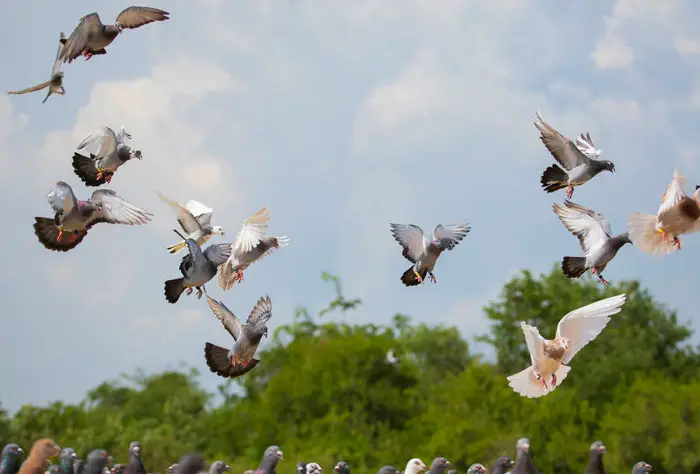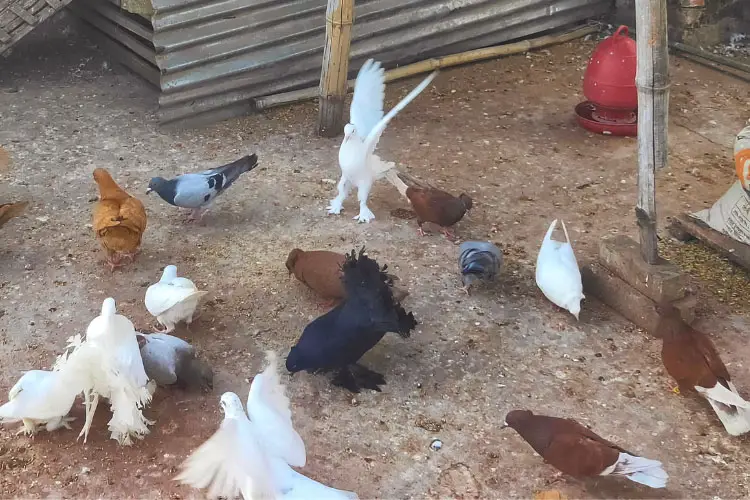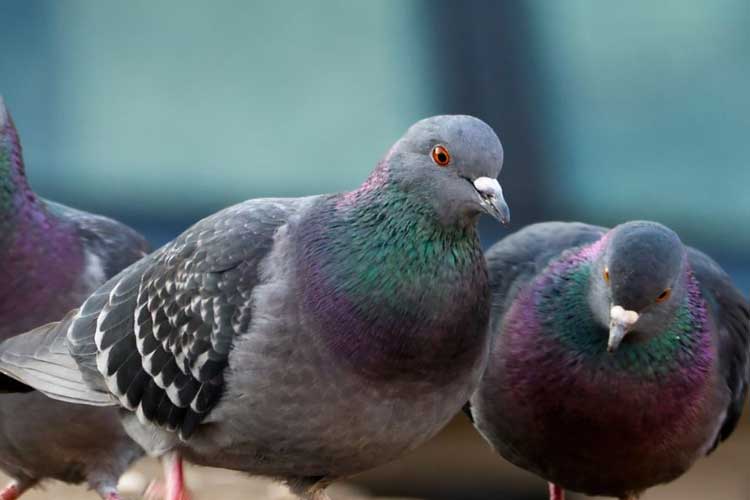The Pigeon Racing Calendar: Local, National, and International Events
Since the 1800s, the race of pigeons was the main source of entertainment for people. They didn’t have access to a wide variety of sports and hobbies back then and hence relied upon such sports for amusement.
In this article, we shall discuss the pigeon racing calendar: local, national, and international events in depth. Since the passion for the racing of pigeons didn’t die in the hearts of folks and is still a very viable topic to discuss.
From the types of races to discussing how to participate in such races, we shall discuss them all in the article down below.
Local Pigeon Racing Events
This is the most basic of the 3 events that shall be discussed. The local events are hosted by any reputable local citizen with a passion for racing pigeons.

The prize money is nothing special, and the competition is more friendly than competitive. The main attraction for such a local race is for the working men to enjoy their evening at the end of their working shift.
Depending on the demand for such an event, they may as well be hosted every week. This encourages amateur racers to experience and learn pigeon race and hopefully someday become a master of this trade.
National Pigeon Racing Events
This type of race is organized by the government or separate organizations directly under the government.
National events are organized within a specific state, inviting people from every corner and district in that very sovereign state.

The main attraction of national races is the determination of a countrywide champion. That may very well represent the entire state on an international level.
Also, amateurs around that very area will be tested to their limits. Hopefully, helping them, in the long run, to become an international champions someday.
International Pigeon Racing Events
This is the most prominent sort of racing event out there. In these events, participants earn a proper name for themselves, their nation, and their pigeons. Additionally, the price pool for an international event is unmatched compared to the other racing events.

Such an event is hosted by a welcoming nation, inviting people from around the globe. The main intention for such an event is to attract tourists and set up a competitive honoring event to gain commending PR from around the world.
So more than just personal glory, people compete in international events to bring glory to their own very sovereign state.
Types of Pigeon Races
There are mainly 3 types of racing events featuring pigeons, namely local, national, and international, as we have already discussed.
All of these events organize two types of races for the audience to enjoy, long-distance races and short-distance races following either one of the formats discussed down below.

Formats of the Race
We will discuss the format of racing before discussing the difference between a long race and a short race.
1. Club-Race
It is more of an uncommon and unorthodox style of racing. This style of racing is usually designed to help the amateur common folks to partake in it.
The pigeon is trained to return to its cage, while the pigeon is taken an approximate distance from that very cage. It is then released to return back, while the time is recorded, and along with the distance traveled, an average speed is determined. The one with the highest average speed wins.
2. One-loft Race
This is more of an official race than a club race. In one-loft races, the pigeons are trained within one giant loft. They are trained to return back to this loft once released.
Hence, all the pigeons are transported a measured distance away from the loft and released at the same time. The first one to reach the loft wins.
Long Race Vs Short Race
Below we shall discuss the 2 main types of races that are arranged worldwide following one of the above-mentioned formats.
Long Race
Following either of the format, the race is set to cover a distance of 500 to 1000 miles. This is a challenging and testing race; hence all the pigeons are recommended to be adults during racing.
Short Race
A counterpart to the long race, a short-distance race consists of a lap distance of 100-300 miles. Short races are more common at local events, as they are arranged about every week. So the race arranging authority also has to keep in mind the pigeons’ health and affairs.
Prominent Pigeon Races Around the World
Since International events hold such high values, we ought to have honorable mentions for the most prominent international races available. Their price pool and their due calender date so that you may be completely prepared to snatch the prize money through honest effort and dedication.

| Name Of The Competition | Location | Usual Racing Date (Approximation) | Prize Money ($) [Approximati-on] |
|---|---|---|---|
| Derby Marrakech International | Morocco | February to April | 26,685 to 106.75 (Winner to 50th place) |
| Pyramids International | Egypt | March to April | 75,000 (Winner) |
| Pattaya International | Thailand | October to January | 187,500 to 1,250 (Winner to 50th place) |
| Hoosier Classic | North America | October | Up to 1,200,000 (Winner) |
| Royal Pigeon Racing Association | United Kingdom | March | 42,287 (Winner) |
| British International Championship Cup | United Kingdom | March to September | 120 to 48 (Winner to Third) |
| South African Million DollarPigeon Race | South Africa | October | 1,000,000 (Winner) |
Although, unlike national and local races, international events are much more consistent with their dates for races.
National and local races rely heavily on the availability of the audience around their specific area. International races have no such boundary, as the audience can come from all across the globe. Also, as prestigious as an international race is, people wouldn’t mind making time in their schedule.
But the main variable is the weather! Pigeons would not be able to compete properly against one another if the sky is not clear. Due to that, the dates of the fixtures are not constant rather are continuously changing.
Getting Involved in Pigeon Racing
Heated competition, hefty prize pool, burning passionate rivals, and unmatched glory! Pigeon racing can easily rush adrenaline through the veins of anyone who care to explore this hobby.
But passion and dedication alone won’t cut your pigeons into being the best ones in the flock. They need proper attention, and you need to know the proper strategies for getting involved. All of these will be discussed in-depth down below.

Find Yourself A Proper Breed
Finding the proper breed is the most crucial part of racing pigeons. No matter how much work you do on an inferior breed, the ultimate outcome might as well be the same.
Hence make sure to figure out the type of races you would want to enter. If you are interested in short races, maybe adopt pigeons who have a higher take-off (acceleration) speed.
Or, if you are looking to invest in long races, maybe find yourself a breed of pigeons that can reach and maintain a higher average speed.
Hence it is always recommended to use a breeding index for pigeons to find yourself the best breed.
Properly balanced diet
For pigeons to fly far and fast, they must have a properly routined balanced diet from as young as a few weeks old. To develop strong muscles in their arms to aid in flight, they must be fed adequate amounts of protein.
After a training session, make sure to include at least 7 grams of protein in your pigeons’ diet. Peas are a great source of protein for them, especially cowpeas.
Here is a video to help you figure out your pigeon’s balanced diet
Make Sure To Keep Them Hydrated
Pigeons require an abundance of water in their diet to stay healthy and even more when they are racing. A common misconception among many is that water would make their pigeons fat and hinder their performance.
That is not true. In fact, hydration brings the best out of your pigeon, and you should include plenty of water in their diet. Apply this tip practically, and you can see the results definitely.
Give Them Breaks
Just like us; pigeons also do suffer from burnout! Hence it is important to give them breaks between training sessions and races.
During an extensive period of flight and intense training, the muscles of your pigeons’ wings can get sore. This will surely affect your pigeons’ performance in tracks.
Hence make sure to at least give an hour or two between training sessions for your birds to rest. Additionally, also make sure to give at least an entire day off in a week. This will help your birds’ wings’ muscles to recover and also keep them happy.
If you’re interested in the longevity of racing pigeons and how to ensure their health, you may find our articles on how many years a racing pigeon can race and how to treat E. coli in racing pigeons informative. Our article on how many years a racing pigeon can race discusses the factors that influence their racing career and provides tips for maximizing their performance and well-being. Additionally, our article on how to treat E. coli in racing pigeons covers the causes, symptoms, and treatment options for this bacterial infection that can affect pigeons in racing lofts.Conclusion
We have extensively discussed the topic of the pigeon racing calendar: local, national, and international events. Giving all the information regarding pigeon racing and the differences and merit of local, national, and international events.
But one key thing to mention here is that do not forget to act humane to your pigeons. Their main purpose for staying with you may be racing for glory, but they are still your pet. Also, they would end up treating you how you treated them, so don’t expect obedience if you don’t act kind.





